English Reformation
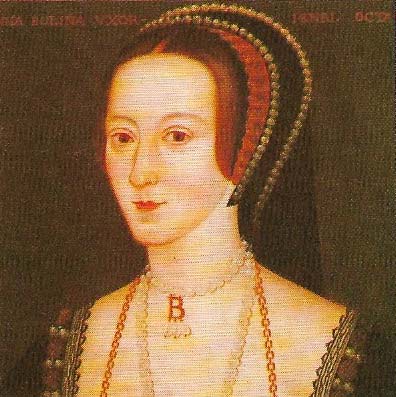
Figure 1. Anne Boleyn (c. 1507–1536), was secretly married to Henry in January 1533 to ensure the legitimacy of the child that she was carrying. In the event, however, she gave birth to a daughter. Elizabeth, and not the male heir for which Henry had been hoping. During Anne's later pregnancy, Henry fell in love with Jane Seymour (c. 1509–1537), accused Anne of adultery and incest, and had her executed in 1536.
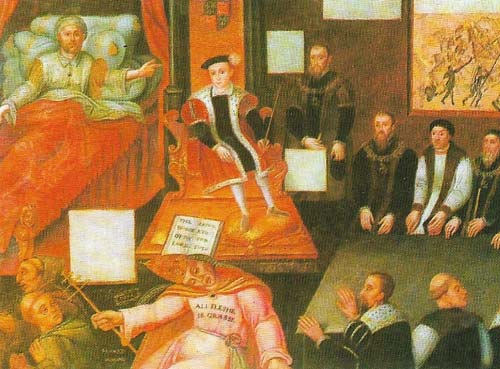
Figure 2. Henry on his deathbed is shown giving pious instructions to his young son, Edward VI, to ensure the stability of the Reformation. Also shown are members of Edward's council who carried out many of the most extreme Protestant policies to be adopted in England in the 16th century. Among these was an order against "superstitious" images in churches, which led to much iconoclasm. Chantries – chapels used specifically for the purpose of praying for the souls of those recently dead and thought to be in purgatory – were also abolished in 1547. Their foundations had often included provision for schools, and so many schools were set up under Edward.
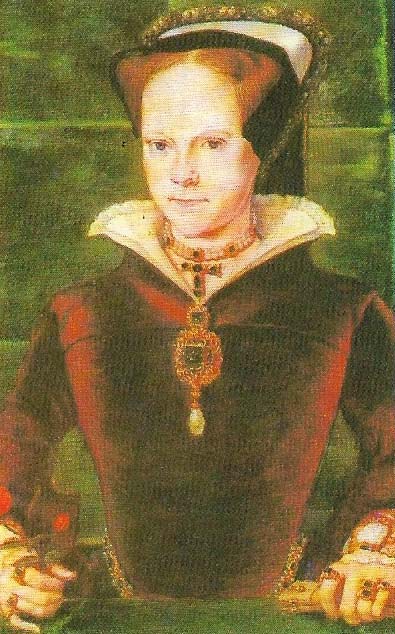
Figure 3. Mary I refused to repudiate her mother's faith during Henry's reign, and after her succession she fortified her restoration of Catholicism by marrying Philip II of Spain, leader of the Counter-Reformation. Her ruthless determination to end Protestantism in England earned her the title of "Bloody Mary", but in private affairs she was gentle.
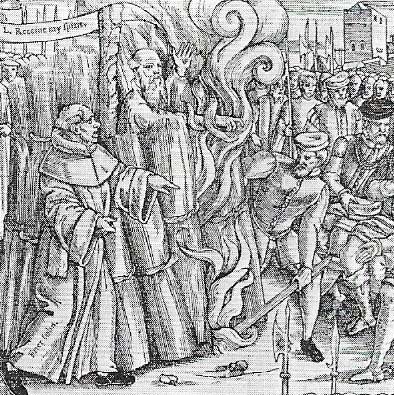
Figure 4. Thomas Cranmer ennobled the Reformation with the majestic rhythms of his transitions of the Bible and liturgy, but politically he was weak and pliant. On occasion he went against his personal convictions to defer to royal authority. He was the theological inspiration behind the innovations of Edward's reign, Mary made him recant his Protestant faith, but later he renounced the recantation itself, and thrust the hand that signed it into the flames first, when burnt at the stake.
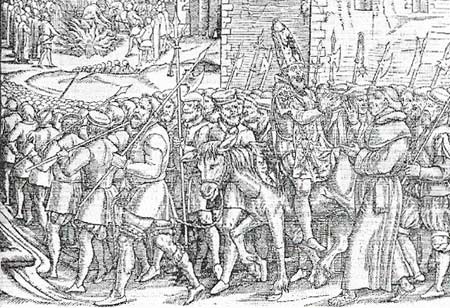
Figure 5. Foxe's Book of Martyres (1563) is an account of the persecution of English Protestants since the 14th century. Written by John Foxe (1516–1587) in Strasbourg and Basel where he was in exile during Mary's reign, its emotive language and illustrations won great popularity and strengthened English hatred of Catholicism for may years. Here a victim of Mary's persecution is dressed as the Antichrist as he is led away to his execution.
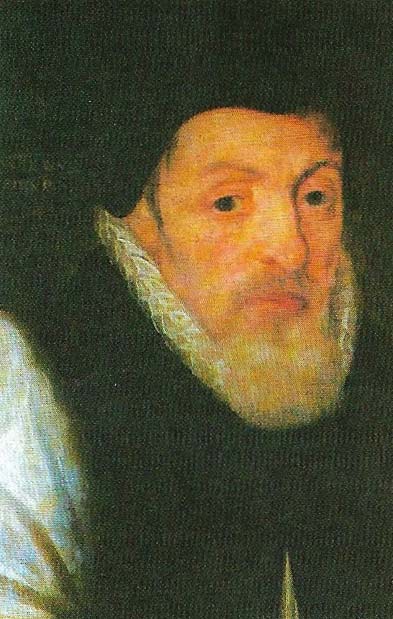
Figure 6. John Whitgift was made Archbishop of Canterbury in 1583, and although Calvinist on his personal views, he strictly enforced the laws against dissenters. His use of the Court of High Commission, the supreme ecclesiastical court of the country, was challenged as unconstitutional, but he ensured that the Puritans were broken as a political force. They re-emerged strongly, however, after the accession of James I.
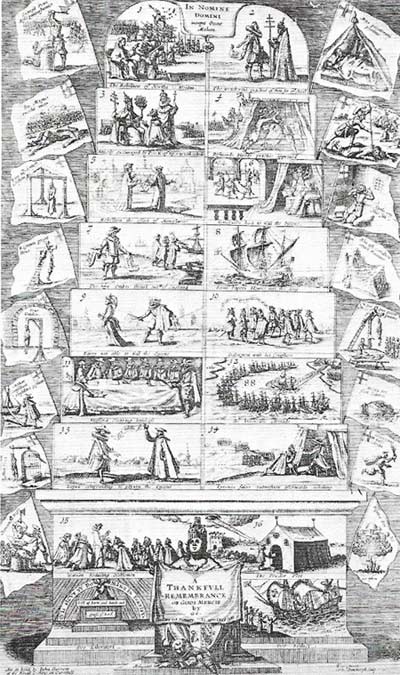
Figure 7. Fear of "popish plots" and invasions haunted Elizabeth's reign, this illustration of the various insurrections of the Catholics since 1550 forms part of a broadsheet on which a ballad recounting the same events was printed for sale to professional balladeers. In 1570 the pope excommunicated Elizabeth and urged Catholics to dispose her. A crisis of conscience ensued for previously unpolitical Catholics, who thereafter were regarded with suspicion of not actually persecuted. There was little danger of a Catholic rebellion since the Revolt of the North in 1569 had proved abortive; but several isolated plots against the queen's life continued throughout her reign, culminating in the infamous Gunpowder Plot of 1605 against James I.
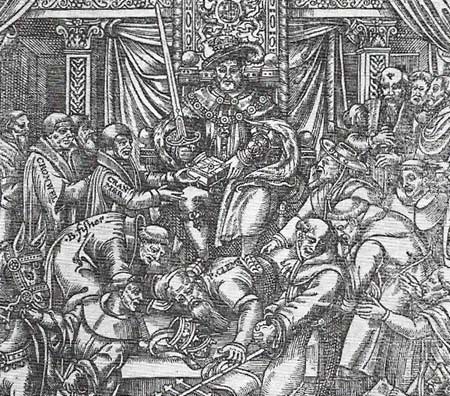
Figure 8. Henry VIII, assisted by Cranmer, tramples the pope underfoot while monks wring their hands in despair, in this contemporary cartoon. Henry was determined to make his authority absolute in his kingdom; he claimed that this was the wish of the people.
The English Reformation had as its particular event Henry VIII's desire for an annulment of his marriage; this the pope was unwilling to grant him. The more general discontent was related to that which brought religious turmoil to the Holy Roman Empire, France, and The Netherlands in the early 16th century. The Church's taxes drained money from the country to finance the pope's political ambitions; ordained priests could seek exemption from secular penalties; and the pope claimed to appoint higher clergy and bishops. The Church's superstitious practices, too, came under attack. There was a tradition of opposition to the pope that had grown up with John Wycliffe (c. 1328–1384) and which had never completely died out, and a mood of questioning old assumptions in the light of. Renaissance humanism.
Nationalism and the Reformation
The Reformation evolved from national opposition to external interference. Wycliffe's ideas, although mainly dealing with doctrinal matters, implied a revolt against papal authority. He translated the Bible into English and suggested that the laity should make their own evaluations about religion. Such ideas anticipated those of Martin Luther (1483–1546); but by the early 16th century opposition by a nation-state to the universal claims of the papacy was now conceivable. Henry VII (reigned 1485–1509) had built up a monarchy strong enough to win the respect of the powers of Europe. Henry VIII (reigned 1509–1547) (Figure 8) was determined to be an ideal Renaissance prince, supreme at home and ostentatiously magnificent abroad.
Henry feared that he would be unable to have a male heir by his first wife Catherine of Aragon (1485–1536). The pope influenced by the Holy Roman Emperor Charles V, Catherine's nephew, was reluctant to annul the marriage. In 1533, Henry's mistress, Anne Boleyn (Figure 1), became pregnant, and Thomas Cromwell (c. 1485–1540) said that the problem could be speedily resolved by claiming that the king was not answerable to the pope. The marriage was annulled by Thomas Cranmer (1489–1556) (Figure 4), who was made Archbishop of Canterbury to deal with the divorce issue, and in 1533 Catherine was forbidden to appeal to Rome. The Reformation Parliament (1529–1536) was directed at every stage of the break with Rome to enact the necessary legislation. In 1534 it passed the crucial Act of Supremacy, declaring Henry to be "Supreme Head" of the English Church, and then sanctioned the dissolution of the monasteries by the Crown.
The introduction of Protestantism
Henry VIII wished to be head of the English Church, but wished to dissociate it from the Lutheran ideas that were spreading through the Holy Roman Empire. Cromwell and Cranmer, however, urged him to adopt a more Protestant attitude, and in 1538 an English translation of the Bible was ordered to be placed in every church.
The reign of Edward VI (1547–1553) saw Protestant doctrine more fully accepted (Figure 2). Edward was a minor, and the Protector Somerset (1506–1552) relaxed the laws against heretics and welcomed radical foreign preachers to the country. The clergy were allowed to marry and the new prayer books of 1549 and 1552 showed a distinct turn towards Protestant doctrine.
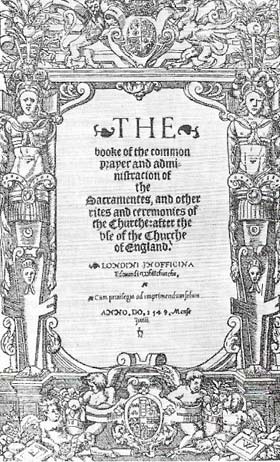 |
| The prayer book of 1549 introduced a national liturgy in place of the various local "uses" practiced previously. A rebellion in the West Country objected to the use of the vernacular in the service, claiming that it was like "a Christmas game". Doctrinally the book was a compromise and was followed by a more Protestant version three years later. |
Mary (reigned 1553–1558) (Figure 3), the daughter of Catherine of Aragon, introduced a severe Catholic reaction; many Protestants were driven into exile, and nearly 300 were burnt at the stake as heretics (Figure 5). But her repression was unpopular: Henry VIII had sold to the gentry many of the lands acquired by the dissolution of the monasteries. As a result, this class had a vested interest in opposing a full restoration of Catholicism, and welcomed the accession of Elizabeth, who, as daughter of Anne Boleyn, seemed certain to restore Protestantism.
The Anglican compromise
Elizabeth I (1533–1603) acceded to the throne in 1558, and sought a middle way between the policies of the previous two reigns. But the return of many of the Marian exiles from Calvinist Geneva and a strongly Protestant Parliament forced her to adopt a more extreme attitude than she intended. She took the title of "Supreme Governor" of the Church, hoping thereby not to offend the Catholics; the Thirty-nine Articles of belief, to which all priests had to swear in 1563, contained ambiguous assertions acceptable to men of all current persuasions. And she also rejected all suggestions that the episcopacy should be abandoned.
In these ways, Elizabeth hoped to gain loyalty through compromise rather than to satisfy conscience, and despite constant pressure in Parliament and elsewhere from the Puritans (as the politically radical Calvinists came to be known) to modify this settlement, she assisted the Anglican Church to gain a positive identity. Some Puritans tried after the 1570s to be allowed to worship outside the Established Church. Eventually John Whitgift (c. 1530–1604) (Figure 6), drove underground all Puritan opposition throughout the country.
Fear of Catholic plots however, continued throughout Elizabeth's reign, allowing the Puritans to pose as good patriots. The Catholic threat remained constant, fuelled from abroad by Jesuit priests and support from Spain, and assisted by a few families in England itself.
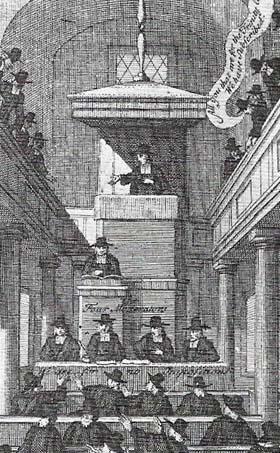 |
| A Puritan church, shown here in a 17th century illustration, was sparsely furnished and austere. The most extreme Puritans, led by Thomas Cartwright (c. 1535–1603) attacked the bishops, hoping to return to the principles of the early Church, accepting only biblical authority. Brownists, led by Robert Browne (c. 1550–1633) were a radical wing hoping to run the Church by a loose federation of ministers elected by their congregation. |
